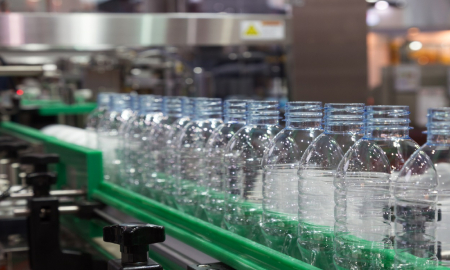How Do TMVs Maintain a Safe Water Supply?
As the colder weather sets in and the demand for hot water increases, it is imperative that hot water outlets are maintained at a safe and consistent temperature with a TMV to ensure the health and safety of its users.
Many are unaware of the fact that bath and shower water above 44 degrees Celsius increases the risk of serious injury or fatality as a result of scalding, particularly among young children and the elderly/vulnerable. In fact, an average of 20 people per year die as a result of scalds from hot bath water, with a further 570 experiencing serious scald injury (the majority of whom are under the age of five or over the age of 60).
The risk of scalding increases rapidly the higher the temperature, with particular care required to manage these risks where water temperatures are circulated above 50 degrees Celsius. However, despite this fact, the NHS define scalding as a ‘Never’ event, as it is wholly preventable and covered by adequate safety guidance and processes. In this blog, Tom Rees, principal consultant within our Water Treatment & Equipment team, explains why Thermostatic Mixing Valves are integral to maintaining a safe water supply all year round.
What is a Thermostatic Mixing Valve and where are they used?
Thermostatic Mixing Valves (TMV) blend hot and cold water together at the outlet point so that the water is a safe temperature when in use, effectively safeguarding against scalding. TMVs are designed to accurately control and maintain hot water temperatures in small domestic outlets such as showers, taps, baths and bidets, even when incoming water pressures or flow rates fluctuate. They are predominantly used in such industries as healthcare, schools and care homes, where those who come into contact with the water are more susceptible to scalding.
The two main types of TMV are as follows:
- TMV2 – a thermostatic mixing valve with maximum temperature stop, complying with BS EN 1287 and BS EN 1111. It is designed to work with water pressure that falls within 0.1 -1.0 bar (BS EN 1287) and 0.5 bar – 5.0 bar (BS EN 1111)
- TMV3 – a thermostatic mixing valve with enhanced thermal performance, complying with the NHS D08 standards. It is designed to work with much higher water pressures than TMV2, from 0.2 bar to 10 bar.
According to the TMVA (Thermostatic Mixing Valve Manufacturers Association), best practice dictates that hot water is generated and stored at temperatures of no less than 60 degrees Celsius in all domestic dwellings in order to kill Legionella bacteria. However, such temperatures are at a high enough level to cause scalding (45 degrees or hotter can cause serious injury very quickly). To counteract this, TMVs effectively control temperatures within these systems in order to significantly reduce the risk of scalding for the user, while also making sure that it remains high enough for a concentrated period of time to kill off Legionella. To achieve this, the water supply to the TMV should be at least 50°C within one minute of the running water on the hot side and below 20°C within two minutes on the cold side.
How does a TMV work?
As hot and cold water enters the valve, it is carefully blended using an internal thermal element to automatically gauge the amount of hot and cold water flowing through it, creating a mixed water stream at a pre-set temperature. This is typically between 39 and 43 degrees Celsius, which is the recommended temperature range for hot water outlets where a TMV is installed.
TMVs do not only provide increased safety against scalding, but also enhance the level of comfort for the user, as the temperature of the water remains constant throughout. They also incorporate an essential failsafe mechanism that automatically shuts down the valve if either the cold or hot water supply fails, preventing scalding from dangerously hot water (from an interrupted cold water supply) or thermal shock from cold water (from an interrupted hot water supply).
What legislation should be considered when installing and maintaining a TMV?
TMV2 is most commonly used in domestic settings and must be regularly maintained in order to comply with BS EN 1111 and EN 1287 standards, both of which provide construction, mechanical, performance and testing requirements for TMVs. Meanwhile, TMV3 is mainly used in healthcare settings such as hospitals and care homes, as TMV2 does not meet NHS D08 standards. This specification has been implemented to ensure that TMVs are able to perform with stable temperature control in care home settings, despite varying supply pressures and temperatures.
Another area of legislation surrounding TMVs is HSG274, which uses a comparative assessment of scalding risk versus the risk of infection from Legionella to determine when and where a TMV should be installed. Given that the most serious risk of scalding is when full body immersion takes place (predominantly when using baths, showers, hand basins and sinks), HSG274 guidance recommends that TMVs should be fitted at these outlets.
HTM 04-01 (Safe Water in Healthcare Premises) is an additional area of guidance affecting TMVs which helps to safeguard against Legionella bacteria within healthcare settings, where many water users will have more vulnerable immune systems. Split into three parts, the guidance provides advice and support on how to control the levels of Legionella and other harmful bacteria in hot and cold water systems, while also discussing the new BS 8680 standard surrounding Water Safety Plans and Water Safety Groups.
How frequently do I need to test and service my TMV?
In order to prevent the growth of Legionella (which thrives between temperatures of 20 and 45 degrees Celsius), HSE L8 requires hot water to be maintained above at least 50 degrees Celsius, 55 degrees in hospital settings and 60 degrees Celsius from hot water heaters. To ensure that this temperature is maintained, TMVs should be regularly tested and the results compared to those which are recorded when the mechanism was originally commissioned. Where there is no significant change to the outlet temperature and the failsafe shutoff activates as it should, TMVs are considered to be operating correctly. However, if the water temperature has increased by more than two degrees Celsius or the failsafe does not work, a full TMV service will be required, as well as recommissioning and/or valve replacement.
If not well maintained, a build-up of scale and debris can damage TMVs, thereby increasing the risk of scalding and bacterial growth. As part of HSE L8, TMVs should be serviced annually and submitted to periodic checks as a minimum, as well as being submitted to regular inspections, cleans and disinfections to remove any dirt and further minimise the chance of Legionella growth. Maintenance should take into account local conditions (such as a potential build-up of hard water/limescale) and the risk of valve failure.
How can we help?
Our Water Treatment & Equipment team can assist with a range of services on thermostatic mixing valves, helping to ensure a safe and ongoing performance. Examples of services that we can provide include:
- Acid clean of valves (to remove identified scale build-up)
- Filter clean and disinfection (where applicable)
- Fail Safe check (where applicable)
- Temperatures checks
- Calibration as required.
If you would like to receive more information about how our Water Treatment & Equipment team can assist with your TMV requirements, click here or contact us.





Add new comment